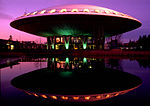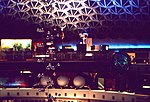
Eindhoven is a city and municipality of the Netherlands, located in the southern province of North Brabant, of which it is the largest municipality, and is also located in the Dutch part of the natural region the Campine. With a population of 246,443 on a territory of 88.92 km2, it is the fifth-largest city of the Netherlands and the largest outside the Randstad conurbation.
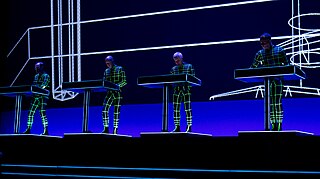
Kraftwerk are a German electronic band formed in Düsseldorf in 1970 by Ralf Hütter and Florian Schneider. Widely considered innovators and pioneers of electronic music, Kraftwerk were among the first successful acts to popularize the genre. The group began as part of West Germany's experimental krautrock scene in the early 1970s before fully embracing electronic instrumentation, including synthesizers, drum machines, and vocoders. Wolfgang Flür joined the band in 1973 and Karl Bartos in 1975, expanding the band to a quartet.

The Rijksmuseum is the national museum of the Netherlands dedicated to Dutch arts and history and is located in Amsterdam. The museum is located at the Museum Square in the borough of Amsterdam South, close to the Van Gogh Museum, the Stedelijk Museum Amsterdam, and the Concertgebouw.

The British Museum Reading Room, situated in the centre of the Great Court of the British Museum, used to be the main reading room of the British Library. In 1997, this function moved to the new British Library building at St Pancras, London, but the Reading Room remains in its original form at the British Museum.

The Montreal Biodome is a museum of enclosed ecosystems located at Olympic Park in the Mercier–Hochelaga-Maisonneuve borough of Montreal, Quebec, Canada, that allows visitors to walk through replicas of four ecosystems found in the Americas.

Retrofuturism is a movement in the creative arts showing the influence of depictions of the future produced in an earlier era. If futurism is sometimes called a "science" bent on anticipating what will come, retrofuturism is the remembering of that anticipation. Characterized by a blend of old-fashioned "retro styles" with futuristic technology, retrofuturism explores the themes of tension between past and future, and between the alienating and empowering effects of technology. Primarily reflected in artistic creations and modified technologies that realize the imagined artifacts of its parallel reality, retrofuturism can be seen as "an animating perspective on the world".

The Royal Exhibition Building is a UNESCO World Heritage-listed building in Melbourne, Victoria, Australia, built in 1879–1880 as part of the international exhibition movement, which presented over 50 exhibitions between 1851 and 1915 around the globe. The building sits on approximately 26 hectares, is 150 metres (490 ft) long and is surrounded by four city streets. It is situated at 9 Nicholson Street in the Carlton Gardens, flanked by Victoria, Carlton and Rathdowne Streets, at the north-eastern edge of the central business district. It was built to host the Melbourne International Exhibition in 1880–81, and then hosted the even larger Centennial International Exhibition in 1888. It was then chosen as the site for the Federation of the Commonwealth of Australia in 1901. The building is representative of the financial wealth and pride that the city of Melbourne and state of Victoria had in the 1870s. Throughout the 20th century smaller sections and wings of the building were subject to demolition and fire; however, the main building, known as the Great Hall, survived.
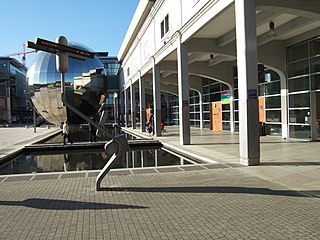
We The Curious is a science and arts centre and educational charity in Bristol, England. It features over 250 interactive exhibits over two floors, and members of the public and school groups can also engage with the Live Science Team over programming in the kitchen, studio and on live lab. We The Curious is also home of the United Kingdom's first 3D planetarium. The centre describes its aim as being "to create a culture of curiosity".

The Forte di Belvedere or Fortezza di Santa Maria in San Giorgio del Belvedere is a fortification in Florence, Italy.

Shanghai Science and Technology Museum is a large museum in Pudong, Shanghai, close to Century Park, the largest park within the inner districts of the city. It is one of China's most-visited museums. It received 1,351,000 visitors in 2020, despite a fall of attendance of 72 percent from 2019 due to restrictions and reduced tourism imposed by the COVID-19 pandemic.
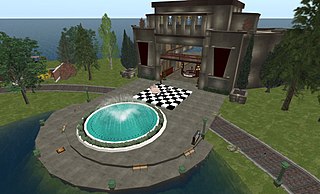
A virtual museum is a digital entity that draws on the characteristics of a museum, in order to complement, enhance, or augment the museum experience through personalization, interactivity, and richness of content. Virtual museums can perform as the digital footprint of a physical museum, or can act independently, while maintaining the authoritative status as bestowed by the International Council of Museums (ICOM) in its definition of a museum. In tandem with the ICOM mission of a physical museum, the virtual museum is also committed to public access; to both the knowledge systems embedded in the collections and the systematic, and coherent organization of their display, as well as to their long-term preservation. As with a traditional museum, a virtual museum can be designed around specific objects, or can consist of online exhibitions created from primary or secondary resources. Moreover, a virtual museum can refer to the mobile or World Wide Web offerings of traditional museums ; or can be born digital content such as, 3D environments, net art, virtual reality and digital art. Often, discussed in conjunction with other cultural institutions, a museum by definition, is essentially separate from its sister institutions such as a library or an archive. Virtual museums are usually, but not exclusively delivered electronically when they are denoted as online museums, hypermuseum, digital museum, cybermuseums or web museums.
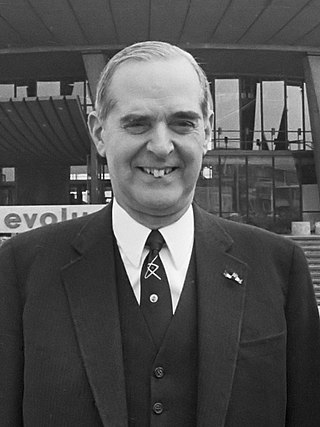
Frederik Jacques "Frits" Philips was the fourth chairman of the board of directors of the Dutch electronics company Philips, which his uncle and father founded. For his actions in saving 382 Jews during the Nazi Occupation of the Netherlands in World War II, he was recognized in 1996 by Yad Vashem as a Righteous Among the Nations.
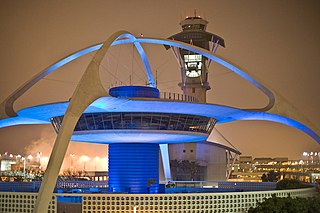
The Theme Building is a structure at Los Angeles International Airport (LAX), considered an architectural example of the Space Age design style. Influenced by "Populuxe" architecture, it is an example of the Mid-century modern design movement, later to become known as "Googie". In 1993, the city designated the exterior and interior of the Theme Building as a historic-cultural monument.

The Queen Elizabeth II Great Court, commonly referred to simply as the Great Court, is the covered central quadrangle of the British Museum in London. It was redeveloped during the late 1990s to a design by Foster and Partners, from a 1970s design by Colin St John Wilson. The court was opened by Queen Elizabeth II in 2000.

The Effenaar is a music venue in the centre of Eindhoven, the Netherlands. It was squatted in 1971 and has grown into one of the largest pop venues in the country, hosting rock, pop and techno events. The current Effenaar consists of two music halls after being renovated between 2002 and 2005. The large hall has an audience capacity of 1300, is intended for use by larger bands and acts and is considerably larger than the original hall. The small hall has a capacity of 400 and is used for smaller and/or regional bands.

GeoCenter Møns Klint is a geological and natural history museum on the island of Møn in southeastern Denmark. Located close to the top of the chalk cliffs known as Møns Klint, it was opened on 29 May 2007 by Queen Margrethe. The building was designed by PLH Architects, the winners of an international design competition.

Koert van Mensvoort is an artist, philosopher and scientist best known for his work on the philosophical concept of Next Nature. He is the founder and director of Next Nature Network, a non-profit organization that aims to go forward to nature.
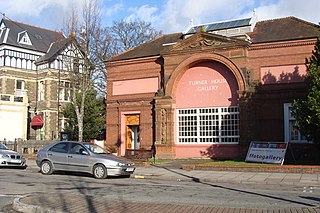
Turner House Gallery is an art gallery and multi-purpose cultural venue in Penarth, near Cardiff, Wales.

Leonardus Lodewijk Josephus "Leo" de Bever was a Dutch architect best known for his works in the city of Eindhoven, which included the Evoluon which he created together with Louis Kalff, the Catharina Ziekenhuis and Eindhoven Airport.
The following is a timeline of the history of the municipality of Eindhoven, Netherlands.




